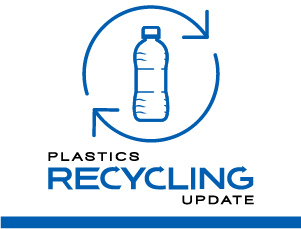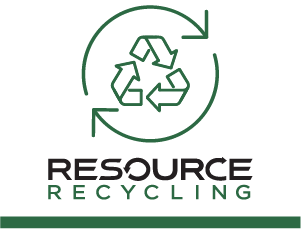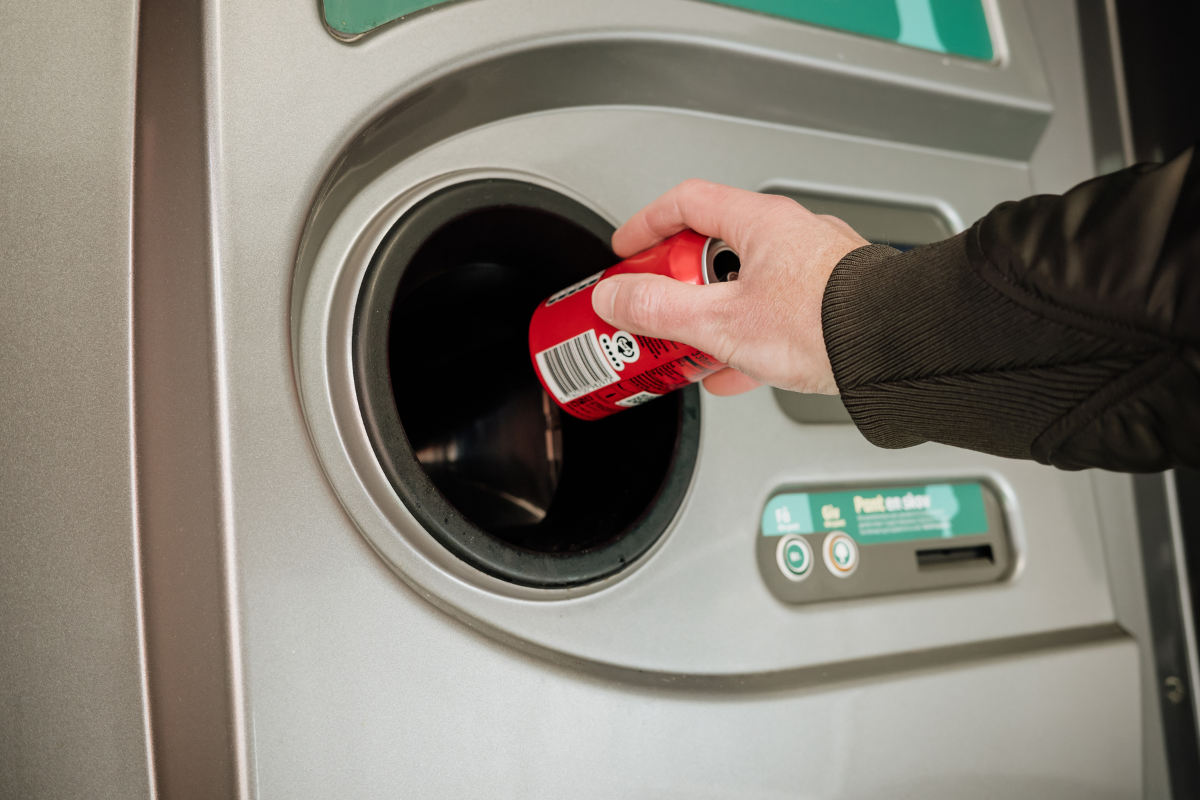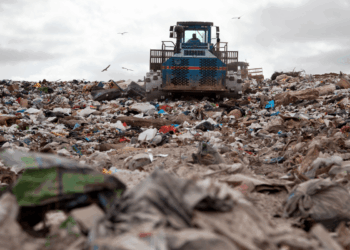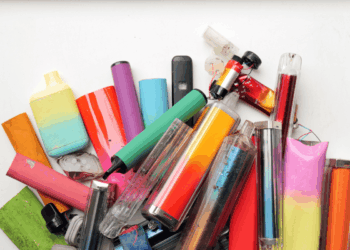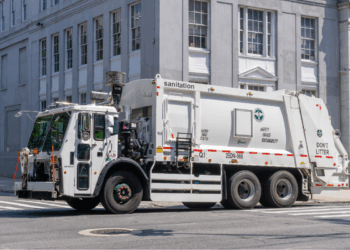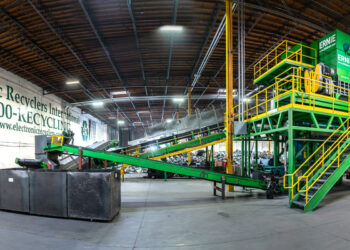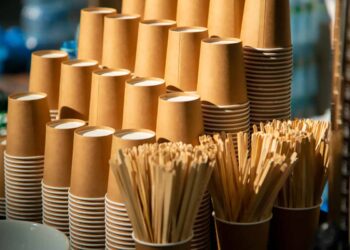A national deposit return system would raise the U.S. UBC recycling rate to 85%, an analysis from the Container Recycling Institute found.
The report estimated a 2021 national UBC recycling rate of 37.2%, “dramatically lower than that in many other industrialized countries,” due to a lack of recycling access and participation as well as losses at the curb, MRFs and secondary smelters.
CRI’s recycling rate is slightly lower than the 41.6% rate reported by the Aluminum Association and Can Manufacturers Institute, because CRI didn’t include food cans and included imported full goods. The Aluminum Association only includes imported empty cans.
UBC recycling rates have been declining even in states with a DRS. Other reports, such as those from Eunomia and Reloop, have also suggested that deposit return systems are a highly effective way to recover UBCs.
A national DRS would recover 815,000 additional tons of UBCs per year, CRI found. Even modernizing the existing systems in the 10 states that have passed bottle bills would raise the national UBC recycling rate by 3.2 percentage points, the report added, and passing DRS laws in all the states that have introduced DRS legislation since 2021 would raise the national rate by 20 percentage points.
Modernization typically includes raising deposits from 5 cents to 10 cents and sometimes adding more beverage types to the program.
The report, called “Improving Efficiency and Sustainability in Aluminum Beverage Can Recycling,” also addresses how aluminum beverage cans could be designed and manufactured with recycling in mind.
“The 2020 COVID-related ‘candemic’ aluminum can shortage indicated the importance of improving the way materials and resources in aluminum used beverage cans (UBCs) are reused, recycled, or kept in circulation in the economy and ensuring the can recycling process is as lossless as possible,” the institute wrote.
In a press release, CRI President Susan Collins said it’s “imperative that the domestic aluminum can industry improve its recycled content status, because the global aluminum can industry simply cannot meet its sustainability goals without such improvement.”
A higher volume of material is necessary to support two multi-billion-dollar secondary smelters being built in the U.S., she added, which will bring the total number of secondary smelters in the country to nine.
Arconic has a smelter in Alcoa, Tennessee. Novelis has smelters in Greensboro, Georgia; Berea, Kentucky; Oswego, New York; and is building another in Bay Minette, Alabama. The other smelters are Constellium’s in Muscle Shoals, Alabama, Kaiser Aluminum Warrick’s in Newburgh, Indiana, and Logan’s in Russellville, Kentucky. Aluminum Dynamics is currently constructing a smelter in Columbus, Mississippi.
The new facilities will each have about 600,000 tons of capacity, both recycled and virgin.
For perspective, almost 700,000 tons of UBCs were recycled in 2020, according to the CRI report.
“Any further declines in the U.S. aluminum UBC recycling rate, or any legislative repeals of state DRS programs, would threaten UBC supply levels for the melters, putting a financial strain on their businesses,” Collins added.
Where cans slip through the cracks
The report sought to quantify UBC losses at all points of the recycling process, starting with lack of collection. About 55% of UBCs in the U.S. are recycled via DRS or curbside bins, the report found, leaving 45% landfilled or littered.
“If the country had only curbside recycling and no DRS programs, the theoretical maximum recycling rate would be 45% due to losses at MRFs and melters, as well as the fact that about 24% of beverages in aluminum cans are consumed away from home,” the authors wrote.
Once UBCs make it to the MRF, between 25% and 33% are missorted, the report said, based on other reports and studies. One study estimated the number could be as high as 53%. CRI noted that “additional comprehensive studies are needed to analyze the sorting and recovery accuracy of MRFs.”
Past the MRF, about 11% of the total weight of UBC bales that are sent to secondary aluminum smelters is contamination, the report continued.
“Contaminants include those that are unavoidable – inherent parts of the can and baling wire – and those that are avoidable – including PET and rigid plastics, dirt and debris, fiber and other materials,” the report noted.
Ways to improve rates
Simply increasing access to recycling would help raise rates, the report noted, as could increased collaboration among curbside, DRS and away-from-home recycling programs.
However, the report found that DRS made the largest impact. The report used 2021 industry data to calculate that UBCs in deposit programs have a 74% recycling rate versus 26% for non-deposit UBCs.
In line with that finding, the 10 U.S. states with DRS programs account for almost half of the total tons of aluminum UBCs recycled in the U.S., the report noted: 300,716 of the 633,500 tons total.
“DRS programs recycle greater numbers of UBCs because beverage cans on deposit are handled and sorted differently than those in curbside systems,” the report said. “Cans are kept as separate commodities throughout the DRS process, meaning they are not mixed with other materials, resulting in clean, high-quality UBCs more likely to be made into new containers.”
Given the report analyses and data, CRI suggested four ways to improve the U.S. UBC recycling rate: modernizing existing DRS, passing DRS in all states that have introduced legislation since 2021 (Texas, Florida, Pennsylvania, Illinois, North Carolina, New Jersey, Washington, Maryland, New Hampshire and Rhode Island), implementing DRS laws in the 10 non-deposit states with the highest populations (Texas, Florida, Pennsylvania, Illinois, Ohio, Georgia, North Carolina, New Jersey, Virginia and Washington), and implementing a national DRS.
A national deposit would have to be rolled out in stages, Collins said in the press release, but the “data conclusively demonstrate that DRS programs are the most impactful way to increase UBC recycling rates.”
“We believe that a potential 85% national recovery rate is achievable with a high performing, transparent recycling system,” she added.



